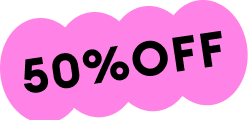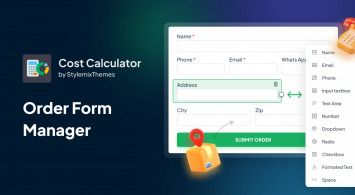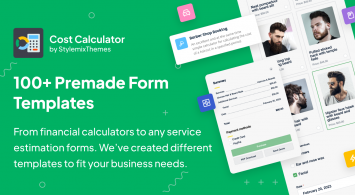Are you struggling with low conversion rates? Improving the website conversion rate is crucial for anyone running a business who wants to boost growth and profitability.
By optimizing your website for better conversions, you can enhance user experience and customer journey, and eventually, increase sales.
Why Conversion Rates Matter
A conversion rate shows you how many people visit your website and more importantly, take action, like buying your product or service, signing up for your newsletter, or filling out a contact form.
The higher the conversion rate on your pages, the more likely your business will be successful. It means that visitors are engaged and encouraged to buy your services. Usually, a conversion rate of 2-5% is considered solid, but good conversion rates vary by industry.
If you’re tired of low conversion, you need to understand what your visitors want and analyze their needs. Afterward, you can create optimization strategies to implement on your website.
Let’s explore a few strategies to boost conversions on your page.
Perform an assessment of your conversion rates
To make your conversion rates higher, it’s essential to start with the assessment. This process helps to identify and address obstacles that could be hindering your users from taking action, which ultimately impacts your business’s bottom line.
A conversion assessment focuses on the website’s overall user experience and behavior, and even your sales. It’s important to see how users interact with your page. Can they navigate easily, find what they need, and move through the journey to make a purchase or sign up? A smooth user experience is key to keeping potential customers engaged, and any points of friction can cause them to abandon the process.
Customer journey is another critical aspect to keep in mind. You should check whether your checkout or conversion process is simple. Even small distractions or complications in the sales funnel can lead to a high abandonment rate, so streamlining these steps is necessary. Moreover, monitoring user behavior on your website shows where visitors are spending the most time, what actions they are taking, and what might be causing them to drop off.
By identifying these barriers early on, you can fix issues like missing CTAs or confusing navigation. For example, if a landing page lacks a CTA button that’s easily visible to users, and this could lead to missed opportunities. Small adjustments, like making sure users see action prompts right away, can lead to immediate gains in conversion.
To effectively conduct a conversion audit, several tools can help you pinpoint weak spots. Google Analytics is amazing for understanding traffic and user patterns, while heatmap tools give you a visual representation of where visitors are clicking or scrolling. Also, you can gather direct feedback from visitors through surveys or feedback forms to know specific pain points from the user’s perspective.
By addressing the friction points in the user experience and simplifying the conversion process, you can improve the chances of making your visitors real customers.
Optimize Website Speed
You need to think about the website speed as it plays a critical role in the overall user experience. In today’s digital world, users expect websites to load quickly. If a web page takes too long to load, visitors are more likely to leave it. Even a delay of just a few seconds can cause significant drops in conversion rates.
For example, research has shown that a one-second delay in page load time can reduce conversions by as much as 7% (source: Neil Patel). Imagine a potential customer browsing your page to find information about a product but waiting too long for pages to load. Chances are they’ll leave your site and not return.
Improving website speed should be a priority for businesses looking to optimize their conversion rates. Tools like Core Web Vitals, which is a Google initiative, help measure the essential aspects of web performance, like loading speed, interactivity, and visual stability. By regularly analyzing your speed with such tools, you can pinpoint areas that need improvement.
Images that aren’t optimized for the web can slow down load times. Try using image compression tools or implementing lazy loading, where images load only when they appear in the viewport and see how it significantly improves load time.
Another way to speed up your website is by reducing the number of HTTP requests. This can be done by combining scripts, and stylesheets, and reducing the size of the code. Also, enabling browser caching so that returning visitors can load your site faster is a simple but effective strategy.
Websites with faster load times are also favored by search engines. Google has explicitly stated that site speed is one of the ranking factors in its algorithm. A faster website, therefore, not only provides a better user experience but also ranks higher in search results, leading to increased organic traffic.
Use Interactive Content & Tools
Another way you can be sure that the conversion rate will increase is by adding interactive content and elements to your page. It’s proven that with such elements as custom calculators, visitors keep exploring your site or content, and it leads to the checkout.
Interactive tools including the Cost Calculator plugin give instant estimations of prices or other information related to your product. It makes users want to stay on your site and make a decision to request your services.
Simplify Navigation
Website navigation should be intuitive, allowing users to find what they’re looking for quickly and with minimal effort. A clear, well-organized menu is key, and each link should lead to meaningful, relevant content.
If users can’t easily find important information, they’re more likely to leave. Make sure important tools like the Cost Calculator are easy to access. For example, placing a Cost Calculator button on your homepage or in the header makes it immediately visible and accessible without the need for extra clicks or searching. You want to remove friction points for your visitors, guiding them smoothly through their journey on your site.
Simplicity is crucial: if users spend more than a few seconds trying to figure out where to go next, they might get frustrated and bounce. A good tip is to regularly test your site’s flow through tools like Google Analytics or Heatmaps, which can highlight navigation issues, such as poorly placed buttons or menus that confuse users.
Leverage A/B Testing
A/B testing is a great way to optimize your site by comparing two versions of the same element to see which performs better. For instance, you can test two different placements for your Cost Calculator button – one at the top of the page and another at the bottom. Then, analyze which one leads to more clicks and conversions.
You can also try out different button designs, such as a green “Get My FREE Guide Now!” button versus a red “Start Your Quote” button. Small changes like these can have a big impact on conversion rates. The key is to test one change at a time, so you can accurately track what works.
After collecting enough data, you’ll be able to make informed decisions about which elements of your website resonate best with users. Tools like Optimizely can help you set up and track your A/B tests easily. A/B testing allows you to refine your site based on real data, continually improving its performance.
Conclusion
Incorporating Cost Calculator into your website can significantly boost conversion rates by streamlining decision-making and providing users with instant and personalized quotes. By combining this tool with strategies like optimizing website speed, simplifying navigation, and leveraging social proof, you can create a seamless user experience that encourages conversions. Implement these strategies and watch your website’s conversions grow.
Get started with Cost Calculator Pro with all the essential and advanced features today at 50% OFF!

































